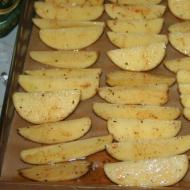
Panchenkov's regular wire nozzle (OLTC) - the concept and features of operation. The use of Panchenkov's nozzle in a moonshine still Copper nozzles for a distillation column
If a couple of years ago there was a fairly active discussion of the topic “what kind of nozzle is better?”, Today this issue is practically closed. The appearance and development in practice of the SPN (spiral-prismatic nozzle) resolved these disputes quite unambiguously. Of course, even now the use of cut or uncut stainless steel washcloths as a nozzle remains relevant. But this is a “quick fix” option, and rectifiers using washcloths sooner or later come to SPN. Nevertheless, we will mention not only these varieties. What did they use before (and in some places still sometimes even today)?
 1. Washcloths. Awarded first place for availability, low cost and pretty good results in use. When choosing washcloths, the main attention should be paid to the issue of real corrosion resistance. Therefore, you should not immediately buy a lot, you must first check the candidate. To do this, the washcloth must be “salted”, i.e. cut into pieces, sprinkle with salt and wrapped in a wet rag (or the rag needs to be soaked in brine), leave to lie down. If after a few days the rust does not appear - everything is in order, you can buy. According to the number of washcloths, it is necessary to proceed from the approximate packing density of 250-280 grams of washcloth per liter of the internal volume of the packed part of the column. You can fill both with whole washcloths, and cutting them into pieces. The density of the stuffing depends on the size of the cut (it is not particularly necessary to grind it - they crumble), and the quality of the separation depends on the density. Still, it will not be possible to achieve the maximum separation on washcloths.
1. Washcloths. Awarded first place for availability, low cost and pretty good results in use. When choosing washcloths, the main attention should be paid to the issue of real corrosion resistance. Therefore, you should not immediately buy a lot, you must first check the candidate. To do this, the washcloth must be “salted”, i.e. cut into pieces, sprinkle with salt and wrapped in a wet rag (or the rag needs to be soaked in brine), leave to lie down. If after a few days the rust does not appear - everything is in order, you can buy. According to the number of washcloths, it is necessary to proceed from the approximate packing density of 250-280 grams of washcloth per liter of the internal volume of the packed part of the column. You can fill both with whole washcloths, and cutting them into pieces. The density of the stuffing depends on the size of the cut (it is not particularly necessary to grind it - they crumble), and the quality of the separation depends on the density. Still, it will not be possible to achieve the maximum separation on washcloths.
Washcloths can also be used as a retaining “plug” when stuffing the column with other nozzles.
 2. Raschig rings, balls, ceramics and other repeating elements. These types of packing have long been used in packed columns. The material from which the elements are made can be different - metal, ceramics, glass. The surface is better rough. In principle, a normal nozzle.
2. Raschig rings, balls, ceramics and other repeating elements. These types of packing have long been used in packed columns. The material from which the elements are made can be different - metal, ceramics, glass. The surface is better rough. In principle, a normal nozzle.
 3. Sulzer nozzle, Panchenkov tap changer. This type of nozzle has long been presented by some manufacturers of household RK as an almost breakthrough solution. In fact, these nozzles have long been used in industry. Compared to the nozzles above, these two options (essentially the same) provide better separation and are slightly more productive.
3. Sulzer nozzle, Panchenkov tap changer. This type of nozzle has long been presented by some manufacturers of household RK as an almost breakthrough solution. In fact, these nozzles have long been used in industry. Compared to the nozzles above, these two options (essentially the same) provide better separation and are slightly more productive.
Finally, relatively recently,
 4. Nozzles SPN (spiral-prismatic). SPN Selivanenko was the first to appear on the market. At the moment, the topic of creating SPN is also developed by other manufacturers. A lot of work has been done to create specific SPNs to achieve various goals. At the moment, this type of nozzle is the best for use in domestic columns. According to the results of numerous experiments carried out by rectifiers, the best option in terms of versatility, results and cost is the use of a 10-sided SPN produced in Ukraine - the so-called Diogenes SPN.
4. Nozzles SPN (spiral-prismatic). SPN Selivanenko was the first to appear on the market. At the moment, the topic of creating SPN is also developed by other manufacturers. A lot of work has been done to create specific SPNs to achieve various goals. At the moment, this type of nozzle is the best for use in domestic columns. According to the results of numerous experiments carried out by rectifiers, the best option in terms of versatility, results and cost is the use of a 10-sided SPN produced in Ukraine - the so-called Diogenes SPN.
You can also make SPN yourself, although for single use it is easier to buy from a reputable manufacturer. The price of a good nozzle on average ranges from 1,500 to 2,500 rubles per liter (1 liter of nozzle weighs about 1.2 - 2.1 kg, depending on the thickness of the wire). Recently I was at a construction fair, went into a pavilion with moonshine goods, so they asked for 1,500 rubles for 450 grams. This, of course, is nonsense. Here is a video on how you can make your own nozzle
I will not consider options for using broken glass and other ersatz substitutes as nozzles, since for those who want to save money there are washcloths that give a completely predictable result and about the operation of which there are a lot of reviews.
What is the impact of the nozzle on the final result? The nozzle is designed to ensure good retention on its surface of the maximum amount of phlegm in the form of a film and at the same time ensure the passage of a sufficient steam flow. Indeed, it is during the interaction of steam and reflux that the separation of the alcohol-water mixture into fractions occurs. Thus, the larger the surface area of the packing, the better, but the packing must not be too "tight" to prevent the vapor path from being blocked. As soon as the “flooding” of the nozzle with phlegm begins, steam bubbling through the phlegm will begin to occur and then choke will occur. Thus, there are several operating modes of the column: "film", "emulsifying" and emergency - choking. The most beneficial mode is emulsification. The main thing here is to find out at what indicators of the supplied power and selection it is in your column that it is possible to achieve a stable pre-choke, which, however, does not turn into a choke. For each column, these indicators will be different, since it is impossible to take into account all the nuances, such as heat loss, heater efficiency, etc.
About the nozzle, even just one SPN, you can write a lot of things, so if you have any specific questions, ask.
At home, you can get alcohol during the first distillation of not the highest strength and not the best quality, if you do not use auxiliary devices. One of them is the Panchenkov nozzle, the principle of which is to screen out unwanted impurities during distillation.
Each consumer evaluates the quality of moonshine according to his own criteria, but the main ones are the strength of the drink and the almost complete absence of fusel oils and unwanted odors in the composition. Both characteristics are the responsibility of the product manufacturer, who directly controls the process.
Rectification procedure
This operation allows you to ensure high-quality cleaning of the expelled moonshine. The principle of operation of the moonshine still in this situation is multiple distillation. In the tank, the resulting steam is divided into several fractions. The process takes place in the designs of rectifiers.
To perform the distillation, raw alcohol is poured into the cube. The container is placed on a heat source and slowly begins to heat up. At this time, the liquid gradually gains temperature and forms steam above the surface. He, in turn, moves through the cavity of the distillation column and there enters the cavity of the dephlegmator. The formed condensate itself is called phlegm.
Further, it flows down along the inner surface of the distillation column and the reflux condenser. The cavity of the column has a filler called the "Panchenkov mesh", in a moonshine still it usually alternates with portions of stainless steel chips.

A collision of phlegm and vapor occurs in the cavity. This procedure has its own term - "heat and mass transfer". During rectification, the distillate is repeatedly distilled. For this, a different principle of operation of moonshine stills is used, using special nozzles, a food mesh or plates in the design. The result will be obtaining almost pure alcohol up to 97% of the fortress.
reference Information
Adjustable wire nozzle, on-load tap-changer is a scientific development of OAO Tupolev, confirmed by a patent for an invention. It was originally developed to increase the efficiency factor for the purification of crude oil for subsequent use as fuel for aircraft. Copper was used for the manufacture, designed to improve the absorption of sulfur and prevent it from entering the already purified product. Due to its physical properties, copper acts as a catalyst for the operation of the apparatus, increasing the rate of heating and cooling and reducing the interval between these processes.

To date, the on-load tap-changer is used not only in the flight industry, but also in the production of alcohol-containing products. In everyday life, it is used for the manufacture of premium moonshine stills, like Grinalko and others.
Structurally, it is a rolled copper wire with a special weave, which is convenient to insert into the column. It is easy to adjust the size, density and length on your own, it is also easy to pull it out and clean it from absorption products.
Practical use
The use of an improving nozzle can be considered in such a unit as Favorit moonshine still. It has a dephlegmator column, which is connected to a wave adapter with a flow type cooler. The column also contains a pre-cooler, which can be switched off.
The package includes a Panchenkov nozzle. The installed hinged structure is collapsible and, if necessary, is modified. This requires the purchase of additional items.
Novice moonshiners claim that the Panchenkov nozzle significantly reduces the flow rate. This is true, but in the end, a pure product is obtained faster and better, since no distillation or rectification is required.
Although there is a slight decrease in output, this is compensated by a cleaner product in the exclusive Favorit moonshine still and other similar units. In cases where a regular Panchenkov nozzle (RPN) is used, the design of the apparatus can be reduced without compromising the quality of the finished product.
This solution is beneficial for small-sized products, where an important place is given to external dimensions. Since a superstructure a meter or more high will look overly bulky even in a large kitchen.
The moonshine still using a nozzle, the basic principle of operation remains the same as with the classic layout. The difference is only in the lengthening of the passage of vapors in the cavity. Passing through a pipe with a filler (nozzle), alcohol vapors containing impurities have the opportunity to come into contact with a larger metal surface than during the passage through an empty pipe. Giving off heat, fusel oils cool down, condense and return to the cavity to the mash. At the same time, the alcohol continues to move further to the outlet.
Phlegm particles can be picked up again and moved to the upper layers of the container, where, once again passing through the tap changer, they will return again. Thus, it is possible to prevent unwanted liquids from entering the finished alcohol or moonshine.
The pipe, as well as its filler, do not fall in temperature conditions to the level of condensation of alcohol vapors, which provides them with passage to the refrigerator. The role of the nozzle is a condensation filter for household moonshine stills. It was first used for large industrial units involved in the distillation of oil, alcohols, gas, etc.
Product Benefits
The main positive qualities possessed by the Panchenkov nozzle are as follows:
- with the simplicity of the design, it is possible to achieve maximum cleaning results;
- the terms of purification with a nozzle are significantly reduced, since the process goes in parallel with the production of alcohol;
- it can be placed / taken out inside the tsargi in a rolled form;
- can be adjusted according to the degree of filling in the pipe, creating a flow of the required power;
- the material is stainless steel, which can be used for many years;
- if necessary, it can be purchased separately to the one in the kit.
VIDEO: How to properly clean the Panchenkov nozzle
Varieties of nozzles
In addition to this type, other analogues can be used inside the cavity:
- Metal washcloths sold in the housekeeping department. Their availability and budgetary cost makes the product popular among experienced moonshiners. When choosing such a product, it is worth paying attention to a sufficient degree of corrosion resistance. Before using a particular brand, you need to conduct a small test. To do this, wrap the cut washcloth in a damp cloth, before that, it is necessary to salt the product abundantly with table salt. If after a few days corrosion does not appear, then the washcloth is allowed for use. It is necessary to take them about 250 g per liter of capacity.

- Raschig rings, ceramics. It is desirable to select a material with a rough surface. In addition to ceramics, glass is used. This solution shows good results.

- Spiral prismatic nozzles. Many experts recognized such fillers as one of the most effective. The conclusions are based on numerous experimental results.

- Homemade nozzles. To make them, you will need a machine or a drill, as well as a stainless steel bar.
The use of any type of nozzles is the personal choice of each manufacturer of homemade alcohol.
What nozzles do you use? We are waiting for your comments and evaluations of the effectiveness of certain packings in distillation columns.
VIDEO: Making a copper nozzle for a distiller
Panchenkov's moonshine is a column-type distiller. The device does not particularly stand out among other devices. The dephlegmator column is connected to the refrigerator through a curved adapter. The column itself is equipped with a cooler, which, if necessary, is turned off.
New items include mesh nozzles that are easy to disassemble and modify. All this apparatus is really made by hand.
The efficiency of the moonshine still is determined by the presence and correct choice of nozzle. Usually, preference is given to the regular Panchenkov nozzle. This is a twisted wire, in the form of a roll, inserted into the side of the distillation column.
It has the following advantages:
- Its presence helps to separate the mixture into separate fractions.
- Increases the strength of the drink during moonshine brewing.
- Easily operated at home.
- Availability to use.
There is only one drawback. Such a nozzle is used only in a moonshine still of small dimensions, since it can be inserted into a pipe no more than 30 cm.
Technical specifications:
- Wire thickness - 0.13mm
- Gaps between turns of threads, maximum 1mm.
- The nature of the weaving of the threads is zigzag.
- Drawer side diameter from 3 mm to 30.
A Panchenkov's regular wire nozzle was developed for the purification of aviation fuel feedstock. However, it has received practical application in moonshine stills with a tsarga. Its use reduces the height of the column, which is an important condition in the absence of a large area. It is not always convenient to use a device with a height of 1 m.
It is realistic to make such a mesh with your own hands, but this requires a special machine that will provide the necessary tolerances during manufacture.
Ratification procedure
 The nozzle located in the tsar, constantly in contact with steam. This increases the contact surface. Now its contact is not only with the pipe, but also with a metal thread. The efficiency of the device increases several times. Sivuha, being a high-boiling liquid, condenses, flows back into the original container and again takes part in the distillation process. This process continues continuously.
The nozzle located in the tsar, constantly in contact with steam. This increases the contact surface. Now its contact is not only with the pipe, but also with a metal thread. The efficiency of the device increases several times. Sivuha, being a high-boiling liquid, condenses, flows back into the original container and again takes part in the distillation process. This process continues continuously.
The drawer, together with the nozzle, does not lower the temperature until the alcohol condenses, so the vapors, moving further, reach the refrigerator. Panchenkov's mesh is a filter that cleans moonshine.
The moonshine still has a flat bottom with a large column diameter. At such a scale no clogging option. Assembly of the device is not difficult. All gaskets provide sufficient tightness. Powerful refrigerator, provides the necessary heat exchange. At the outlet, the condensate temperature does not exceed 25 degrees. Distillation speed - 3 liters of moonshine per hour.
Spiral - prismatic nozzle
Selivanenko nozzles were the first of the spiral-prismatic meshes. In the future, such developments were supported by other manufacturers. Outwardly, this is a spiral prism that is inserted into the side. In modern columns, it is their use that is considered the most effective. Based on research, the most optimal option is the use of a ten-sided spiral-prismatic nozzle.
SPN can be made by hand.
This element passes steam through itself, retaining phlegm on its surface, which settles in the form of a film. In this place, work is done to separate the mixture into fractions. An increase in the area of SPN has a beneficial effect on the final moonshine, however, it is important not to create obstacles for the passage of vapors. A dense nozzle can block the movement of future condensate. In the case of an increase in the layer of phlegm to a critical level, the choke of the moonshine still begins. There are 3 types of choke: film, emulsification and emergency. Thus, it is necessary to select the power so that the apparatus works in the emulsification choke system without going into emergency.
 The use of such material in devices is very convenient, because it allows increase the percentage of purification of moonshine. The copper filler can be easily adjusted to produce a quality product. The advantage of this material is that copper is able to absorb sulfur. The properties of copper are such that it can heat or cool condensate at an accelerated rate. As a result, the speed of the device is increased.
The use of such material in devices is very convenient, because it allows increase the percentage of purification of moonshine. The copper filler can be easily adjusted to produce a quality product. The advantage of this material is that copper is able to absorb sulfur. The properties of copper are such that it can heat or cool condensate at an accelerated rate. As a result, the speed of the device is increased.
Washcloths
Washcloths occupy a leading place in the use as packings in columns. Reason - availability and low price. The main rule when choosing is corrosion resistance. Given this, you do not need to do, immediately, a bulk purchase. A small batch of material is purchased, cut into pieces, sprinkled with salt and wrapped in a moistened cloth. The check is carried out within a few days. In the absence of rust, you can make the main purchase.
Then the washcloths are cut into pieces, not particularly small ones, because the material can crumble. They clog the pipe of the apparatus. The density should be in relation to 250 grams of washcloth per liter of water.
Sometimes this substance is used for other purposes, such as creating a water lock. When stuffing the device with another nozzle.
Installing and flushing screens of distillation columns
Mesh is rolls, the width of which ranges from 5 to 10 cm. The length can be up to 100 cm. The parameters used depend on the dimensions of the device. In some cases, the mesh can be cut.
The installation process is carried out in two ways. You can fold the mesh in half and turn it into a wad, put it in the drawer. Another method is to simply roll it into a tight tube and turn it into the tube of the apparatus. Pulled back out with tweezers.
Rinsing of nozzles is carried out infrequently. This happens when the mash got into the pipe, and its soot occurred. If it was stainless steel, then boiling is allowed.
If the material is copper, then it is necessary to clean the system, for the purpose of prevention, constantly.
To wash the grid of distillation columns, the following method is used:

Using different types of nozzles, you can significantly improve the quality of the final product. The efficiency of the apparatus increases sharply. The running speed is increased. The resulting moonshine is no different in quality from the white liquor sold in the store.
To cleanse from harmful impurities and at the same time strengthen the final product, drawers or strengthening columns are used.
For additional selection of fusel oils and other chemical compounds, a Panchenkov nozzle is used, which is a spiral mesh of thin stainless or copper wires.
This mesh is twisted into a roll and inserted into, trying to be of sufficient density, covering the entire internal space of the column, but at the same time allowing vapors to pass freely up to the refrigerator. Among distillers, this the product is called SPN(spiral-prismatic nozzle).
Vapors of alcohol, rising along the side, collide with a natural obstacle in the form of nozzles (spirals) and cool. The impurities contained in the alcoholic product, which have a low boiling point, flow back in the form of reflux, and the alcohol vapors pass higher.
But since the process is continuous: the vapors rise, meet with the flowing phlegm, give it some of the impurities along with water, the final product is not only purified, but also strengthened, according to the principle: less water, stronger alcohol.
The same process will also take place in a hollow film frame. But, having filled it with SPN, we increase the inner surface of the tsarga tenfold, which means we increase the selection of phlegm at times along with the strengthening of moonshine.
What is needed in a moonshine still?
A hollow film column will also cope with more or less quality from harmful impurities. But for this, its height must be 1 meter or more, which is extremely inconvenient, especially if the distillation cube with such a “superstructure” needs to be placed on the stove in an ordinary kitchen. That's why nozzles are used.
With the help of a moonshine still with a tsarga and nozzles, you can:
- receive from the first stage high-quality moonshine, free from;
- "squeeze" the maximum fortress out of the mash. Thus, it is possible to obtain raw alcohol from 80 ° and above the fortress;
- using copper SPNs, distill moonshine of perfect purity from grain raw materials, without the taste of sulfur, which is clearly felt during direct distillation.
How to make a copper mesh with your own hands?
The Panchenkov nozzle has a complex weaving and it is unrealistic to reproduce it at home. But you can make your own analogue of SPN from copper wire, which will ideally work on cleaning not only from fusel oils, but also from sulfur, which is certainly present in the wort made from grain.
You will need:
- copper wire with a cross section of 1 - 1.5 mm in a braid, - 9 meters of a three-core cable. If you take the wire, then 25 - 27 meters based on a drawer with a height of 45 - 46 cm;
- electrode 3 mm, from which the coating is cleaned (only a metal rod remains);
- side cutters and pliers;
- fine sandpaper;
- drill with adjustable speed.
Operating procedure:
- We rid the copper wire of insulation.
- We clean each posting with sandpaper.
- We clamp the core of the welding electrode into the drill chuck.
- We insert the tip of the copper wire into the gap between the clamps of the drill and begin to wind it evenly and tightly (coil to coil) on the electrode at the lowest speed.
- We remove the column of the spiral and cut it with side cutters into pieces of 3-4 mm.
- After cutting, we press the edges of the spirals together with pliers so that they do not later interlock with segments.
- If your tsarga previously had Panchenkov's stainless steel nozzles twisted into rolls, they need to be pushed out. To do this, use a stick.
- Then we insert one nozzle from the bottom of the column - it will serve as a holder for copper spirals, otherwise they will fall out into a cube.
- The rest of the space of the column is filled with copper springs made by us.
Note. For high-quality cleaning and at the same time - strengthening moonshine, it is necessary to fill the drawer to at least 2/3 of the height. If suddenly the springs are not enough, make more.

Cleaning and flushing
Stainless steel Panchenkov's nozzles are sufficient from time to time (not even after each run) to get out of the column, unfold and rinse under a tap. Then fold again and insert into the washed drawer side.
With copper nozzles of industrial production, as well as with spirals of our own production, it is a little more difficult. They are prone to strong absorption of fusel odors, moreover, to blackening in an aggressive environment containing methyl, acetone, various acids and fusel oils.
This is what enters our body along with crude moonshine. Therefore, you need to put them in order after each stage. Fortunately, cleaning them is not so difficult. We take:
- 2 liters of boiling water;
- 20 g of citric acid.
 We dilute the acid in boiling water, using a whole, enameled or stainless pan without chips.
We dilute the acid in boiling water, using a whole, enameled or stainless pan without chips.
The Panchenkov nozzle is a stainless steel or copper mesh designed for for purification of alcohol vapors from harmful fractions and impurities. It is installed directly in the drawer (pipe between the distillation cube and the refrigerator). Designed for column-type apparatuses (it will not work for conventional distillers). It costs from 200 to 1000 rubles, depending on the material and manufacturer.
The grid is installed directly in the drawer and is a kind of filter. The alcohol vapors that come from the distillation cube pass through this nozzle and are partially condensed. Part of the harmful impurities remains on the grid and then flows back into the cube in the form of phlegm, while purer alcohol vapors move on.
It turns out that the Panchenkov nozzle partially cleans the steam from harmful fractions, taking them on itself. It serves until the weaving begins to fall apart (from 1 to 1000 distillations).
 stainless steel
stainless steel  Copper
Copper
Is there any sense from this nozzle and how effective is it?
In our subjective opinion, Panchenkov's grid has low work efficiency and little sense from it.
Rectification is quite enough to purify moonshine from all harmful fractions, so somehow complicate the design of the column or slow down this process because of which wire meshes we see no reason.
From nothing to do the grid can be put. But you can not put. This is the whole point.

The wire mesh is installed directly in the column side.
How to properly install the Panchenkov grid in the moonshine still
There is nothing difficult in this. We take the classic grid length 30-70 cm depending on the thickness of the column and evenly twist it into a tube. Then we put this tube in a circular motion quite tightly into the drawer side.
It is necessary to achieve such a density that it does not travel through the pipe and at the same time passes air.
A good video was prepared by the author of the channel HANhi, who clearly told and showed how to use this nozzle correctly. It turns out that the original name of this device sounds like this: a regular Panchenkov wire nozzle (RPNP). Lots of useful information to listen to.
Copper or stainless steel: which is better to choose
Copper is effective only in one case - during the distillation of grain mash. This metal will trap sulfur particles that form in this type of mash. In view of this, cleaning will be carried out more efficiently.
In all other situations, give preference stainless steel:

Copper, stainless steel and an alloy of these two metals.
- Several times cheaper.
- Easier to clean.
- Does not oxidize.
There is also a combined nozzle, which is made of 50% stainless steel and 50% copper.
If you make grain distillates infrequently, then there will be no point in it.
How to properly clean the Panchenkov nozzle
Depending on the type of metal, the procedure will vary.
- stainless steel cleaned with normal running water. Rinse it well under the tap, dry it and you can use it further.
- FROM copper work harder. It is necessary after each distillation to boil the nozzle in water with the addition of citric acid (10 grams per liter). After 5 minutes of this boiling, rinse the device under running water and dry well.
It is not necessary to use mechanical methods (brushes, sponges, etc.) for cleaning. There is a high probability of spoiling the weaving, which, in turn, will negatively affect the effectiveness of the mesh.
Is it possible to use a grid on a conventional distiller with a dry steamer
There is a hypothesis that the presence of Panchenkov's nozzle will have a positive effect on the quality of moonshine. This is justified only in one case, and then with an explanation: when distilling grain mash and using a small mesh of copper.
In all other cases, this useless and there is a chance to do everything even worse. The volume of the sukhoparnik decreases, and this is a decrease in the efficiency of its work.
















